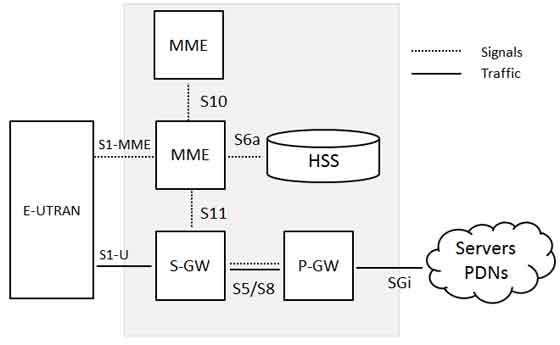Microwave communication
Microwave communication is method of wirelessly sending data. It is very similar to radio technology. Microwaves are right next to radio waves on the electromagnetic spectrum.
Microwave is a line-of-sight wireless communication technology that uses high frequency beams of radio waves to provide high speed wireless connections that can send and receive voice, video, and data information.Microwave links are are widely used for point-to-point communications because their small wavelength allows conveniently-sized antennas to direct them in narrow beams, which can be pointed directly at the receiving antenna. This allows nearby microwave equipment to use the same frequencies without interfering with each other, as lower frequency radio waves do. Another advantage is that the high frequency of microwaves gives the microwave band a very large information-carrying capacity; the microwave band has a bandwidth 30 times that of all the rest of the radio spectrum below it.
Microwave radio transmission is commonly used in point-to-point communication systems on the surface of the Earth, in satellite communications, and in deep space radio communications. Other parts of the microwave radio band are used for radars, radio navigation systems, sensor systems, and radio astronomy.
The higher part of the radio electromagnetic spectrum with frequencies are above 30 GHz and below 100 GHz, are called “millimeter waves” because their wavelengths are conveniently measured in millimeters, and their wavelengths range from 10 mm down to 3.0 mm. Radio waves in this band are usually strongly attenuated by the Earthly atmosphere and particles contained in it, especially during wet weather. Also, in wide band of frequencies around 60 GHz, the radio waves are strongly attenuated by molecular oxygen in the atmosphere. The electronic technologies needed in the millimeter wave band are also much more complex and harder to manufacture than those of the microwave band, hence cost of Millimeter Wave Radios are generally higher.
History of Microwave Communication
James Clerk Maxwell, using his famous “Maxwell’s equations,” predicted the existence of invisible electromagnetic waves, of which microwaves are a part, in 1865. In 1888, Heinrich Hertz became the first to demonstrate the existence of such waves by building an apparatus that produced and detected microwaves in the ultra high frequency region. Hertz recognized that the results of his experiment validated Maxwell’s prediction, but he did not see any practical applications for these invisible waves. Later work by others led to the invention of wireless communications, based on microwaves. Contributors to this work included Nikola Tesla, Guglielmo Marconi, Samuel Morse, Sir William Thomson (later Lord Kelvin), Oliver Heaviside, Lord Rayleigh, and Oliver Lodge.

